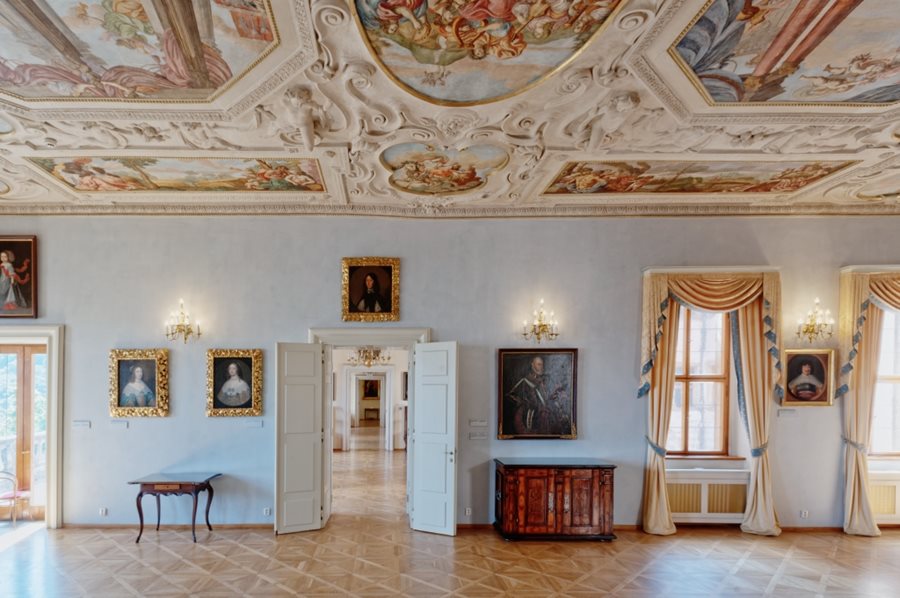Testing display of HTML elements
This is 2nd level heading
This is a test of including a "Link Button"
Link ButtonThis is 3rd level heading
This is a test paragraph.
This is 4th level heading
This is a test paragraph.
This is 5th level heading
This is a test paragraph.
This is 6th level heading
This is a test paragraph.
Basic block level elements
This is a normal paragraph (p element). To add some length to it, let us mention that this page was primarily written for testing the effect of user style sheets. You can use it for various other purposes as well, like just checking how your browser displays various HTML elements by default. It can also be useful when testing conversions from HTML format to other formats, since some elements can go wrong then.
This is another paragraph. I think it needs to be added that the set of elements tested is not exhaustive in any sense. I have selected those elements for which it can make sense to write user style sheet rules, in my opionion.
div element. Authors may use such elements instead of paragraph markup for various reasons. (End of div.)This is a block quotation containing a single paragraph. Well, not quite, since this is not really quoted text, but I hope you understand the point. After all, this page does not use HTML markup very normally anyway.
The following contains address information about the author, in an address element.
Päivänsäteenkuja 4 A, Espoo, Finland
Lists
This is a paragraph before an unnumbered list (ul). Note that the spacing between a paragraph and a list before or after that is hard to tune in a user style sheet. You can't guess which paragraphs are logically related to a list, e.g. as a "list header".
- One.
- Two.
- Three. Well, probably this list item should be longer. Note that for short items lists look better if they are compactly presented, whereas for long items, it would be better to have more vertical spacing between items.
- Four. This is the last item in this list. Let us terminate the list now without making any more fuss about it.
The following is a menu list:
The following is a dir list:
This is a paragraph before a numbered list (ol). Note that the spacing between a paragraph and a list before or after that is hard to tune in a user style sheet. You can't guess which paragraphs are logically related to a list, e.g. as a "list header".
- One.
- Two.
- Three. Well, probably this list item should be longer. Note that if items are short, lists look better if they are compactly presented, whereas for long items, it would be better to have more vertical spacing between items.
- Four. This is the last item in this list. Let us terminate the list now without making any more fuss about it.
This is a paragraph before a definition list (dl). In principle, such a list should consist of terms and associated definitions. But many authors use dl elements for fancy "layout" things. Usually the effect is not too bad, if you design user style sheet rules for dl which are suitable for real definition lists.
- recursion
- see recursion
- recursion, indirect
- see indirect recursion
- indirect recursion
- see recursion, indirect
- term
- a word or other expression taken into specific use in a well-defined meaning, which is often defined rather rigorously, even formally, and may differ quite a lot from an everyday meaning
Text-level markup
- CSS (an abbreviation;
abbrmarkup used) - radar (an acronym;
acronymmarkup used) - bolded (
bmarkup used - just bolding with unspecified semantics) - big thing (
bigmarkup used) - large size (
font size=6markup used) - Courier font (
font face=Couriermarkup used) - red text (
font color=redmarkup used) - Origin of Species (a book title;
citemarkup used) a[i] = b[i] + c[i);(computer code;codemarkup used)- here we have some
deletedtext (delmarkup used) - an octet is an entity consisting of eight bits (
dfnmarkup used for the term being defined) - this is very simple (
emmarkup used for emphasizing a word) - Homo sapiens (should appear in italics;
imarkup used) - here we have some inserted text (
insmarkup used) - type yes when prompted for an answer (
kbdmarkup used for text indicating keyboard input) Hello!
(qmarkup used for quotation)- He said:
She said
(a quotation inside a quotation)Hello!
- you may get the message Core dumped at times (
sampmarkup used for sample output) - this is not that important (
smallmarkup used) overstruck(strikemarkup used; note:sis a nonstandard synonym forstrike)- this is highlighted text (
strongmarkup used) - In order to test how subscripts and superscripts (
subandsupmarkup) work inside running text, we need some dummy text around constructs like x1 and H2O (where subscripts occur). So here is some fill so that you will (hopefully) see whether and how badly the subscripts and superscripts mess up vertical spacing between lines. Now superscripts: Mlle, 1st, and then some mathematical notations: ex, sin2 x, and some nested superscripts (exponents) too: ex2 and f(x)g(x)a+b+c (where 2 and a+b+c should appear as exponents of exponents). - text in monospace font (
ttmarkup used) - underlined text (
umarkup used) - the command
catfilename displays the file specified by the filename (varmarkup used to indicate a word as a variable).
Some of the elements tested above are typically displayed in a monospace font, often using the same presentation for all of them. This tests whether that is the case on your browser:
This is sample text inside code markup- This is sample text inside kbd markup
- This is sample text inside samp markup
- This is sample text inside tt markup
Links
This is a text paragraph that contains some inline links. Generally, inline links (as opposite to e.g. links lists) are problematic from the usability perspective, but they may have use as “incidental”, less relevant links. See the document Links Want To Be Links.
Forms
Tables
The following table has a caption. The first row and the first column contain table header cells (th elements) only; other cells are data cells (td elements), with align="right" attributes:
| Country | Total area | Land area |
|---|---|---|
| Denmark | 43,070 | 42,370 |
| Finland | 337,030 | 305,470 |
| Iceland | 103,000 | 100,250 |
| Norway | 324,220 | 307,860 |
| Sweden | 449,964 | 410,928 |
Character test
The following table has some sample characters with annotations. If the browser’s default font does not contain all of them, they may get displayed using backup fonts. This may cause stylistic differences, but it should not prevent the characters from being displayed at all.
| Char. | Explanation | Notes |
|---|---|---|
| ê | e with circumflex | Latin 1 character, should be ok |
| — | em dash | Windows Latin 1 character, should be ok, too |
| Ā | A with macron (line above) | Latin Extended-A character, not present in all fonts |
| Ω | capital omega | A Greek letter |
| − | minus sign | Unicode minus |
| ⌀ | diameter sign | relatively rare in fonts |
Hyphenation
In the following, a width setting should cause some hyphenation, depending on support to various methods of hyphenation.
CSS-based hyphenation
Until recently the great majority of naturalists believed that species were immutable productions, and had been separately created. This view has been ably maintained by many authors.
JavaScript-driven hyphenation
Until recently the great majority of naturalists believed that species were immutable productions, and had been separately created. This view has been ably maintained by many authors.
Explicit hyphenation hints (soft hyphens)
Until recently the great majority of naturalists believed that species were immutable productions, and had been separately created. This view has been ably maintained by many authors.
Jukka Korpela






.jpg?width=1619&height=1080&ext=.jpg)












.jpg?width=1400&height=933&ext=.jpg)













